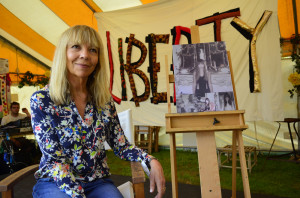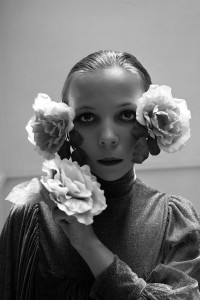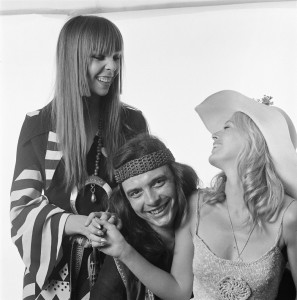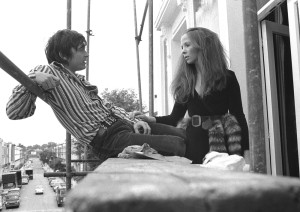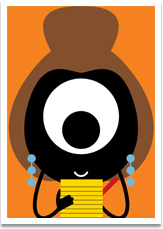Angular Sixties model Penelope Tree relates her life story, from David Bailey to Cambodian children.
I like the idea of a game-changing outfit – something as essentially trivial as fashion altering the flow of an entire life.
Penelope Tree, the angular image-maker of the Sixties – still with her sculpted cheeks and beanpole figure – sat with Sarah Mower at the Port Eliot Festival and recounted the evening – and the dress – that changed the course of her existence back in 1966.
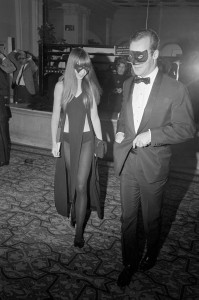
As seen in the grainy images snapped by her nanny in New York, the dress worn by 16-year-old Tree – who had a silhouette to match her name – was not a couture concoction. But as she recounts the story of dressing for Truman Capote’s infamous 1966 Black and White Ball, that stretch jersey dress with more cut-outs than cloth left the lonely, awkward, rebellious teenager “dripping with expectations”.
Viewed today “in cold blood” (as the notorious Truman Capote book title put it), the dress does not look so inspiring, even with what Tree describes as “a bare back down to the waist and spaghetti straps”. Her memory of arriving in foul weather at the Plaza Hotel in a maxi coat under a giant umbrella, spotting grand gowns and ermine bunny ears worn in this historic period of tension over the war in Vietnam, is only the start of the story.
As the Hollywood set, New York’s political lions and grand, old-money Europeans were all brought together by Capote, Tree describes being whirled on to the dance floor by the immaculately dressed upper-crust photographer Cecil Beaton. Another memory is of Mia Farrow dancing the night away with her bodyguard, because Frank Sinatra didn’t “do” dancing.
I found Penelope Tree both ironic and honest, sitting under a canvas tent in patterned shirt and jeans. We onlookers sought the shade of a giant tree as we listened to Sarah Mower drawing out the story of a lonely child, sent at age 14 to boarding school, ignored by her parents and separated from her older siblings.
Yet the former model, now 64, spoke too about her freedom as a “poor little rich girl” on the edge of New York’s dynamic music world, bringing together Bob Dylan, Joan Baez, Lou Reed and Aretha Franklin.
“It was all exciting and happening,” she said. And that description might have also applied to herself, because photographer Richard Avedon, after spotting her at the ball, called Vogue editor Diana Vreeland the very next morning.
The Tree career took off like a rocket. She talked about modelling in that Sixties era, when her sharp cheek-line and geometric eye make-up were in competition with that other graphic model of the time, Twiggy.
Yet the make-up that made the look was put on by the fledgling models themselves and accessories were boots and belts that came from their own wardrobes. They were participators in creating a look – not the compliant “dolly girls” that the dismissive name suggested.
“I loved getting attention – I was hungry for growing up – I felt special,” says Tree, describing Sixties London.
The talk hotted up as she told of her departure from New York, swept off in a thrusting charge by British photographer David Bailey, her mother wringing her hands in the hallway as the couple left the family home.
Still married to French actress Catherine Deneuve, Bailey eloped with Tree to London, to his black glass home filled with images of his ex-girlfriends.
“It could have been much worse – it could have been a Rolling Stone!” says Tree with her very British irony.
She recounted the years with Bailey and his obsession with his work. As they came in at 2am after an evening dining with the infamous Kray twins, London gangsters whose reputation for violence made the waiters quiver, Bailey would abandon her for his work on Goodbye Baby & Amen. That was his project to photograph every influential person of the Swinging London era.
And there it ended, in anorexia, betrayal and a skin disease that put an end to Tree’s modelling and her role as Sixties It-girl.
“It’s one of those life experiences – I learned a lot from it, it’s part of your story,” says Tree. “My one regret is that I didn’t finish university.”
But she has gone on to build a meaningful life, working with Lotus Outreach, a secular charity founded by a Buddhist teacher. Her mission since 2002 is to support organisations against sex trafficking of young women mired in poverty, particularly in Cambodia. Tree has visited orphanages, women’s refugee areas, schools, HIV wards and many other related programmes all over Cambodia.
Returning to the country four years later, she was impressed by how much could be achieved by helping to educate young women, and that has become her mission.
So the young girl in the funky dress who was a brief sensation in the Sixties became a mother and an activist for women to have better lives.
In an era of “selfies”, it was refreshing to listen to someone so self-deprecating. And to find, behind the two-dimensional Penelope Tree image, a witty, wise and thoughtful woman.



